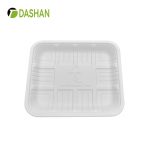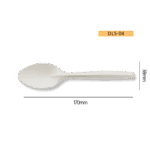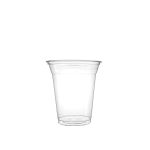Quick Summary
In the world of sustainable packaging, two biodegradable materials have emerged as frontrunners: cornstarch-based plastics and CPLA (Crystallized Polylactic Acid). Cornstarch offers an eco-friendly and cost-efficient solution primarily for cold food applications, while CPLA provides enhanced heat resistance, mechanical durability, and is better suited for hot meals and beverages. Both materials are compostable in industrial facilities, but the choice depends on specific functional requirements, environmental goals, and budget considerations. Understanding the properties, advantages, and ideal use cases of each material is essential for foodservice operators, packaging manufacturers, and sustainability-conscious businesses.
Introduction: Why Material Choice Matters in Biodegradable Packaging
A growing number of consumers, restaurants, and packaged food brands are demanding environmentally responsible alternatives to conventional plastics. Questions like, “Why do some biodegradable utensils hold up in hot foods while others melt?” highlight the need to understand the different materials behind sustainable products.
Two prominent options in biodegradable packaging are cornstarch-based bioplastics and CPLA (Crystallized Polylactic Acid). While both are derived from renewable resources, their properties, performance, and environmental impact vary significantly. Choosing the right material can influence product durability, heat resistance, cost, and compostability. This guide provides an in-depth comparison to help businesses make informed decisions when switching from traditional plastics to sustainable alternatives.
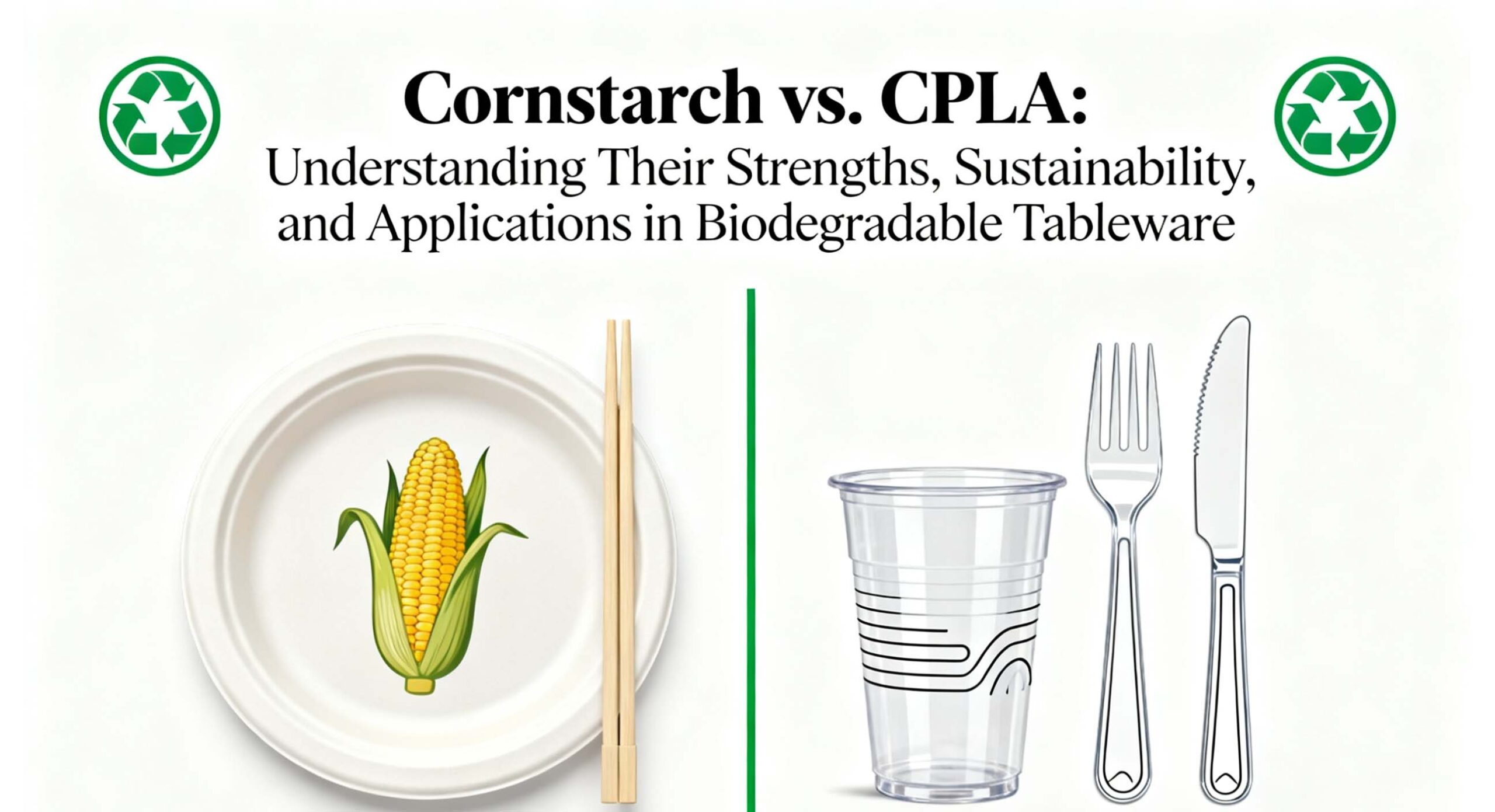
Cornstarch-Based Bioplastics
Source and Production
Cornstarch is extracted from the endosperm of corn kernels through a multi-step process:
-
Steeping: Corn kernels are soaked in water to soften them.
-
Grinding: The softened kernels are milled to separate starch from other components.
-
Separation: Centrifugal techniques isolate starch from protein and fiber.
-
Drying: The starch is dried to produce the final powder form used in bioplastics.
Because corn is a renewable plant resource, cornstarch is a sustainable and environmentally friendly raw material. Its relatively simple processing keeps production costs low, making it widely used in disposable packaging and utensils.
Key Properties and Applications
-
Biodegradability: Fully decomposable under industrial composting conditions.
-
Renewability: Plant-based, reducing dependence on fossil fuels.
-
Common Uses: Cold food packaging, disposable cutlery, snack bags, and bakery containers.
Environmental Benefits
Cornstarch-based bioplastics help lower greenhouse gas emissions and support the circular economy by returning nutrients to the soil after decomposition.
Practical Usage Scenarios
-
Foodservice: Packaging for cold meals, baked goods, and snacks.
-
Agriculture: Biodegradable films and mulching applications.
-
Retail: Shopping bags, takeaway containers, and eco-conscious product packaging.
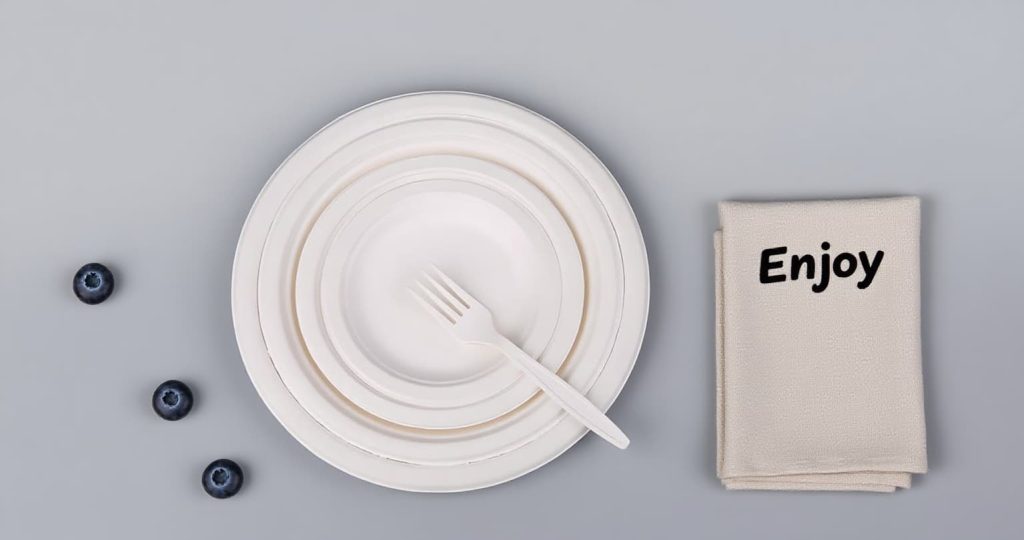
CPLA (Crystallized Polylactic Acid)
Origin and Production
CPLA is derived from PLA, which is produced by fermenting sugars from renewable sources such as cornstarch. PLA is then crystallized to improve thermal resistance and mechanical strength. This additional processing allows CPLA to withstand higher temperatures compared to standard cornstarch-based plastics.
Properties and Uses
-
Biodegradability: Industrially compostable, decomposing into water and carbon dioxide.
-
Heat Resistance: Suitable for hot foods and beverages due to enhanced thermal stability.
-
Applications: Hot drink cups, lids, cutlery, food trays, and even 3D printing filaments.
CPLA balances sustainability with functionality, providing durability and heat resistance where standard cornstarch plastics may fail.
Typical Usage Scenarios
-
Foodservice: Cups, lids, and utensils for hot meals and beverages.
-
Healthcare: Disposable medical tools and containers.
-
3D Printing: Biodegradable filaments for prototyping and manufacturing.
Side-by-Side Comparison of Cornstarch and CPLA
Environmental Considerations
Both cornstarch and CPLA are compostable and made from renewable sources. However, CPLA’s enhanced properties require additional energy and processing, which may slightly increase its carbon footprint. Cornstarch is simpler in production, making it a more natural, low-impact option for cold or dry applications.
Performance Differences
-
Heat Resistance: CPLA can endure higher temperatures (~85–90°C), making it suitable for hot food and drinks. Cornstarch items may deform under heat unless reinforced.
-
Mechanical Strength: CPLA offers superior durability, allowing for sturdy utensils and containers. Cornstarch products are moderately strong but may flex under heavy or hot foods.
Cost and Applications
-
Cornstarch: Cost-effective; ideal for cold food packaging, disposable cutlery, and short-term use products.
-
CPLA: More expensive due to crystallization; preferred for hot foods, reusable items, and high-performance applications.
Comparison Table
| Feature | Cornstarch | CPLA |
|---|---|---|
| Source | Corn kernels | Fermented sugars from cornstarch |
| Biodegradability | Industrial composting | Industrial composting |
| Heat Resistance | Low | High |
| Mechanical Strength | Moderate | High |
| Cost | Lower | Higher |
| Ideal Applications | Cold food packaging, disposable items | Hot food containers, reusable items |
Industry Insights and Market Trends
-
The global cornstarch packaging market is projected to reach USD 1,145 million by 2033, growing at a CAGR of 17.3%.
-
Biodegradable plastics, including CPLA, are expected to grow at a CAGR of 16.2%, reaching USD 25.1 billion by 2032.
Scientific Research
-
Studies indicate that certain cornstarch bioplastics can achieve enhanced tensile strength and fast biodegradability when properly formulated.
-
Comparative research shows that both CPLA and cornstarch plastics degrade effectively under industrial composting, but rates vary depending on material composition and environmental conditions.
Frequently Asked Questions (FAQ)
1. What is the key difference between cornstarch and CPLA cutlery?
Cornstarch cutlery is made from modified starch and may include minor additives for strength, while CPLA is crystallized PLA that can withstand higher temperatures, providing superior heat resistance and durability.
2. Is CPLA superior in heat resistance?
Yes, CPLA resists heat up to 85–90°C, making it suitable for hot meals and beverages. Cornstarch-based utensils may warp under high heat unless reinforced.
3. Are both materials compostable?
Yes, both cornstarch and CPLA are industrially compostable under high-heat conditions, typically decomposing within 90–180 days. Home composting may be less effective for both materials.
4. Which material is more environmentally friendly?
Both are renewable and plant-based. Cornstarch is simpler and less energy-intensive, while CPLA provides enhanced functionality but requires more processing.
5. Can these materials be used in microwaves?
CPLA can be used for limited microwave applications due to its crystallized structure. Standard cornstarch utensils are generally not microwave-safe unless labeled as reinforced.
Conclusion
Cornstarch and CPLA represent two important approaches to sustainable packaging. Cornstarch is cost-effective and ideal for cold foods, while CPLA is engineered for high-heat applications requiring durability. Choosing between them depends on the specific needs of the business, desired performance, environmental impact goals, and budget constraints. By understanding the properties and applications of both materials, foodservice operators and product designers can make informed, environmentally responsible choices.
References
-
Smith, M. & Rujnic-Sokele, M. A Comparative Study of Bioplastics: PLA vs Starch-based Bioplastics
https://doi.org/10.1016/j.proeng.2013.09.149 -
Auras, R., Lim, L.-T., Selke, S. E., & Tsuji, H. Poly(lactic acid): Synthesis, structures, properties, processing, and applications
https://onlinelibrary.wiley.com/doi/book/10.1002/9780470649848 -
Chinthapalli, R., Patra, F., & Giri, S. Performance of cornstarch-based biodegradable packaging for perishables
https://www.sciencedirect.com -
Narancic, T., et al. Biodegradable plastic blends create new possibilities for end-of-life management
https://www.nature.com -
European Bioplastics. Bioplastics Market Data 2024 – Global production capacity and material breakdown
https://www.european-bioplastics.org/market/ -
U.S. Department of Agriculture (USDA). BioPreferred Program: PLA and Starch-Based Product Certification Guide
https://www.biopreferred.gov -
Market.us Research Team. Biodegradable Plastic Market Size, Trends and Forecast (2024–2032)
https://market.us/report/biodegradable-plastic-market/
Disclaimer & Copyright Notice
This article is created by the Dashan Packing editorial and research team.
All information presented here is for educational and industry reference purposes only.
Some data and standards cited in this article are sourced from publicly available materials,
official regulatory documents, or third-party publications, which are properly credited where applicable.
All rights to third-party trademarks, images, and content belong to their respective owners.
If any copyrighted material has been used inadvertently, please contact us at angel@chndashan.com.
We respect intellectual property rights and will promptly remove or revise any material upon verification.


